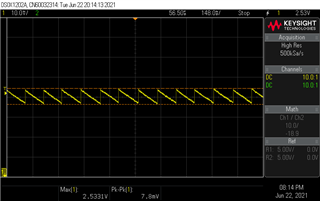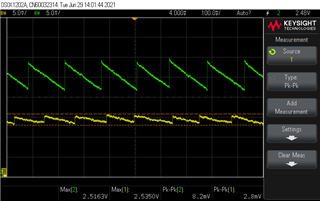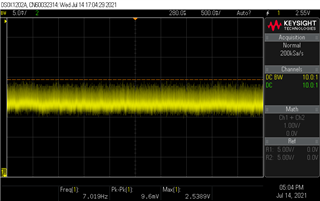Dear TI,
We are using the DC-DC TPS62740 IC in our the Device. we designed as per your reference document.
but when we check the output waveform in DSO we are getting sawtooth at the output of the IC.
if we check on stable power supply we don't find any kind of waves at the output.




